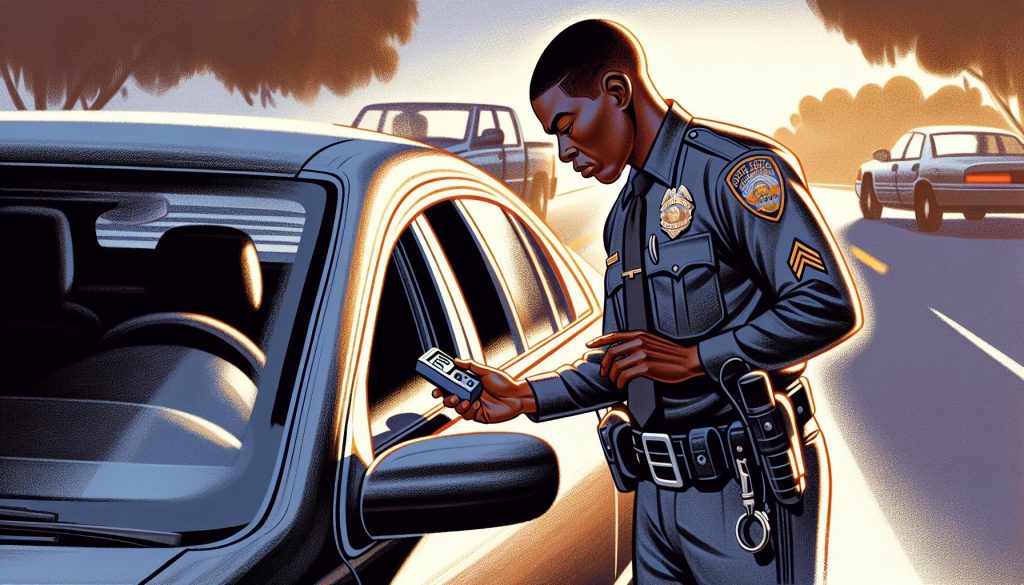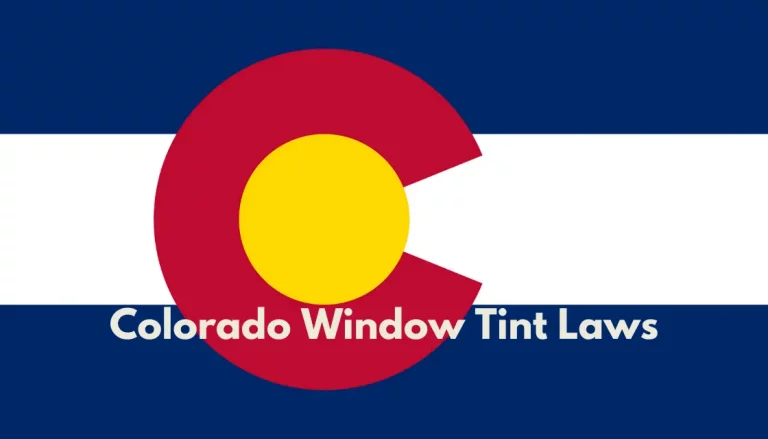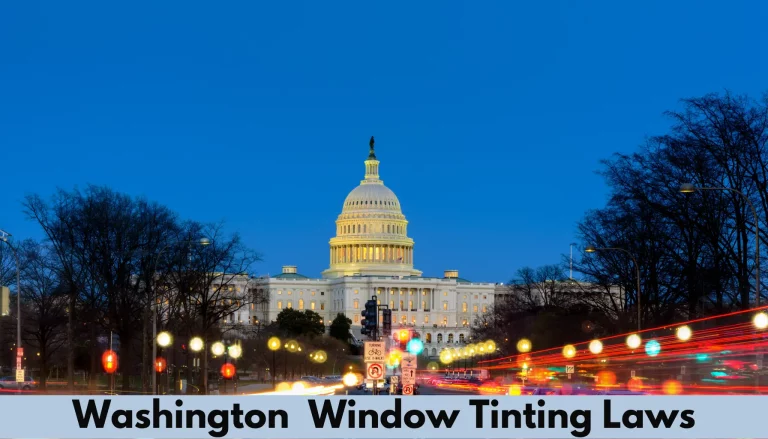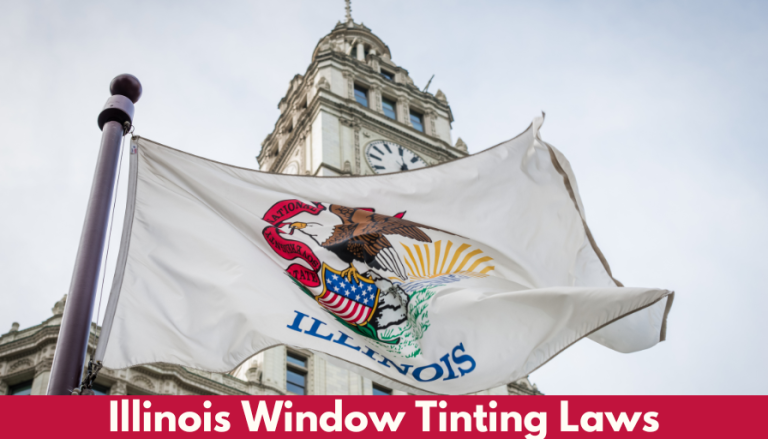Stay Legal: Guide to California Window Tinting Laws
Driving in California, I’ve always been keen on customizing my ride to suit my style and needs. But when it comes to window tinting, there’s more to consider than just looks. California’s window tinting laws are specific and strict, ensuring drivers enjoy their customizations without compromising safety.
I’ve navigated the rules to understand what’s legal and what’s not for window tinting in the Golden State. Whether you’re looking to enhance privacy, block out UV rays, or just give your car that sleek look, knowing these regulations is crucial before you make any changes. Let’s dive into what California law says about your car’s window tint to keep you on the right side of the law.
Understanding California’s Window Tinting Laws
When it comes to styling my car with window tint, I make sure to stay well within the boundaries of the law. California’s window tinting laws are among the most detailed in the nation, designed to balance the benefits of tinting with the need for driver visibility and safety. I’ll break it down so you can understand the specifics.
Front Windshield: The state allows non-reflective tint on the top 4 inches of the windshield. This can help reduce glare but won’t obstruct the driver’s view. However, the rest of the windshield must remain clear to ensure full visibility.
Front Side Windows: The law is precise here. Tint on the front side windows must allow more than 70% of light into the vehicle. This is a critical safety measure that ensures the driver can see pedestrians and oncoming traffic clearly.
Back Side and Rear Windows: For the back side and rear windows, any darkness can be used. This flexibility allows for increased privacy and car interior protection from harmful UV rays. Just remember, if the rear window is tinted, the vehicle must have outside rearview mirrors on both sides.
It’s also vital to keep in mind that the reflection of the tint is regulated. Here are the specifics:
- Front Side Windows: Must not be more than 25% reflective.
- Back Side Windows: Must not be more than 35% reflective.
These reflectivity limits help to prevent the tint from becoming a hazard to other drivers by reflecting sunlight or headlights too intensely.
Some exceptions exist to these laws, especially for medical reasons. If you have a medical condition that necessitates darker tints, you’ll need to carry a certificate that verifies this exception.
For those thinking about DIY tinting, it’s important to understand that California requires a cert sticker to identify legal tinting. The sticker should be placed between the film and glass on the driver’s side window.
Remember, while style and comfort are important, adhering to California’s window tinting laws is essential for a hassle-free drive and avoiding fines. Stay informed and compliant to enjoy a customized ride that meets all legal expectations.
The Importance of Complying with the Regulations

Meeting California’s window tinting laws isn’t just a matter of avoiding a ticket; it’s about maintaining the standards that keep everyone on the road safe. Adhering to regulations ensures visibility for both the driver and others, which can significantly reduce the chances of accidents, especially under harsh weather conditions or during nighttime.
What’s more, compliance with the law reflects a responsible attitude to driving that law enforcement appreciates.
There are other practical reasons to comply with tinting laws. Insurance companies often inquire about vehicle modifications, including tinting. If your window tint does not meet state regulations, it could affect your policy.
In the event of an accident, insurance claims may be denied if illegal modifications have been made. This could leave you facing considerable out-of-pocket expenses for both repairs and potential liabilities.
Moreover, staying on the right side of the law helps maintain your car’s resale value. A car with illegal modifications, including non-compliant window tint, might be less attractive to potential buyers. They might worry about the extra cost and hassle of removing the tint or fear legal repercussions for themselves.
Lastly, it’s good to bear in mind that regulations are in place for a reason. The guidelines around tint levels aren’t arbitrary but are rooted in research and data that aim to keep drivers, passengers, and pedestrians safe.
The visibility of law enforcement officers, who need to see inside vehicles for their own protection, is another critical consideration behind these laws.
Ensuring your vehicle’s window tint meets California’s legal requirements isn’t just about following the law—it’s a statement that you value safety, law enforcement’s needs, and your financial well-being.
It’s also worth noting that there are plenty of legal and safe options for window tinting that can keep you compliant while still giving you that customized look you’re after.
Legal Tinting Limits for Different Windows
When it comes to understanding California’s window tinting laws, knowing the specific legal limits for different windows on your vehicle is crucial. The state has clear regulations that vary depending on the window in question. Front side windows, for example, must allow more than 70% of light in. This ensures that the driver has adequate visibility of their surroundings, which is vital for both their safety and the safety of others on the road.
For rear side windows and the back window, California law is more lenient. There’s no specified minimum light transmission percentage for these windows, allowing for greater privacy and protection from the sun. However, if the back window is tinted, the vehicle must have outside rearview mirrors on both sides.
It’s worth noting that the windshield has its own distinct set of rules. A non-reflective tint is allowed on the top 4 inches of the windshield. This strip can help reduce glare, but it must not infringe upon the driver’s clear view of the road.
| Window Position | Light Transmission | Notes |
|---|---|---|
| Front Side Windows | > 70% | Crucial for driver visibility |
| Back Side Windows | Any | Must have side mirrors if tinted |
| Rear Window | Any | Must have side mirrors if tinted |
| Windshield | Non-reflective tint on top 4 inches | Reduces glare without obstructing view |
Staying within these legal boundaries is not just about abiding by the law; it also involves considering others’ safety. I always advise my readers to double-check their vehicle’s tint against these regulations. It’s an action that takes little time but can save you from potential fines and contribute to safer roads. Remember to always work with a reputable tinting service that understands and adheres to these legal requirements.
The quality of the tint plays a role as well. High-quality tint films can block out harmful UV rays and reject solar heat without compromising visibility. This balance is essential for comfort and safety, thereby aligning with California’s vested interest in the well-being of its motorists.
As we consider the benefits of vehicle window tinting, from UV protection to enhanced privacy, keeping these laws in mind ensures that we enjoy these advantages without running afoul of regulations. It’s a delicate dance between personal preference and legal obligations.
The Impact of Window Tint on Safety and Visibility
When I consider window tinting, safety, and visibility play pivotal roles in my decision-making process. Tinted windows can offer significant advantages, such as reducing glare from the sun and headlights, which enhances driving comfort.
However, too dark of a tint can impede my ability to see clearly, especially under low-light conditions, such as during nighttime or when driving through a tunnel.
In California, tinting laws are structured with safety in mind. Front-side windows must allow more than 70% of light in, which is a standard that ensures that drivers have sufficient visibility while still enjoying the benefits of tinting.
This regulation not only helps me see the outside environment better but also enables other drivers and pedestrians to see into my vehicle, which is crucial for eye contact and non-verbal communication on the road.
When looking at the rear side windows and the back window, the laws are more lenient in terms of tint darkness, allowing for greater privacy. However, I must have dual side mirrors if the tint on these windows is darker, guaranteeing that my visibility isn’t compromised when it comes to awareness of my surroundings.
I’ve also learned that window tints can hold shattered glass together in the event of an accident, providing an added layer of safety. But this benefit must be carefully weighed against the potential risk of first responders needing to see inside a vehicle during emergencies.
Balancing these factors is crucial for maintaining safety standards while taking advantage of tinting features.
Choosing the right tint involves understanding how different levels of darkness affect visibility during various times of the day and under different weather conditions. By adhering to legal requirements, I ensure my own safety and that of others on the road.
As such, staying informed about the latest legal specifications and technological advancements in tint materials is essential for making the best choices for my vehicle.
Enforcement of Window Tinting Laws in California

In my experience, California takes its window tinting laws very seriously. Law enforcement agencies across the state are vigilant about ensuring that vehicles comply with the VLT (Visible Light Transmission) percentages mandated by law.
It’s not uncommon for drivers with tints that are too dark to be stopped and issued a fix-it ticket, which requires them to bring their windows into compliance and show proof to avoid a fine. I’ve seen firsthand that this active enforcement encourages drivers to adhere to legal requirements from the outset.
Officers equipped with tint meters can easily measure the transparency of a vehicle’s windows right on the spot. These devices provide instant readings, offering no wiggle room for drivers who might be skirting the law.
The California Highway Patrol (CHP) and local police departments regularly conduct checkpoints or traffic stops focusing on window tint compliance, indicating the state’s commitment to this aspect of road safety.
Here’s what happens if you’re found non-compliant:
- Issuance of a fix-it ticket: You’ll need to remove or replace the illegal tint.
- Potential fines: Failing to correct the issue can lead to monetary penalties.
- Vehicle inspection: Proof of correction may require a visit to a designated inspection site.
These measures may seem strict, but they’re in place to ensure that all drivers on California roads can see and be seen, minimizing accidents and enhancing overall public safety. Furthermore, staying informed about the enforcement process empowers vehicle owners like me to make informed decisions when selecting tinting options.
In California, taking a proactive approach to understanding and complying with these laws is not just about avoiding penalties—it’s about prioritizing personal safety and the well-being of others on the road.
Conclusion
Staying informed and compliant with California’s window tinting laws isn’t just about avoiding fines or fix-it tickets—it’s about ensuring my safety and the well-being of others on the road. I’ve learned that while tinting can offer benefits, it must be balanced with the need for clear visibility.
As I drive through the Golden State, I’ll keep in mind the importance of adhering to these regulations, knowing that law enforcement is equipped to enforce them. By doing so, I contribute to a safer driving environment for everyone.
Frequently Asked Questions
What are the key benefits of window tinting?
Window tinting offers privacy, reduces glare, helps control the internal temperature by blocking UV rays, and protects the interior from fading.
How does window tint affect driver visibility and safety?
Properly applied tint improves visibility by reducing glare, but excessively dark tints can impair visibility, especially at night, potentially compromising safety.
What is the importance of understanding California’s window tinting laws?
Understanding California’s window tinting laws ensures that your vehicle’s window tint is within legal limits, which helps maintain road safety for all.
How are window tinting laws enforced in California?
Law enforcement in California uses tint meters to measure window transparency. Non-compliant vehicles may receive fix-it tickets or fines.
What are the consequences of not complying with window tinting laws?
Consequences include fix-it tickets, fines, and possibly being required to remove the non-compliant tint or undergoing vehicle inspections.
Why is it important to stay informed about the enforcement process of window tint laws?
Staying informed helps vehicle owners comply with the law, thus preventing legal penalties and ensuring the safety and well-being of themselves and others on the road.







